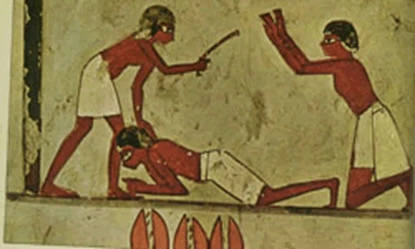 | ||||
| "I plead before God.." -Yoram Raanan |
It was a
few years back, and my wife and I were just settling into our new home after an
exhausting move from New York to Los Angeles. At about 2 a.m., we awoke to what
sounded like cannon balls crashing outside our window. We headed for the door,
and, under the yellow halo of streetlamps, found a dozen neighbors staring in
shock at four wrecked cars.
In the
middle of the road, a young man, maybe 19 or 20, wandered about like a lost
child at an amusement park. Dazed, he mumbled like an incantation: “My life is
over … It wasn’t even my car … My life’s over ....”
Someone
asked, “How did you manage to hit three parked cars?”
“Texting,”
he replied.
By 3 a.m.,
the police had arrived. Their explanation was different: DUI.
Handcuffed
and seated in the back of the squad car, the young man’s face was ashen. He
looked like he regretted the day he was born. I fell asleep wondering how long
would it take before this young man would smile again? Would he see the sunrise
from a county jail cell?
It made me
think of this week’s Torah portion, Vaetchanan, which begins with Moshe pleading
to enter the Promised Land despite a terrible mistake he had made earlier. “I
beseeched God … Please, let me go over, that I may see the good land that is
beyond the Jordan” (Deuteronomy 3:23-25).
According
to the Midrash, Moshe’s despair was as boundless as the sea: “Moshe donned
sackcloth and put ashes on his head. He said to God, ‘Let me at least go as a
beast of the field.’ ‘No.’ ‘Let me go as bird,’ ‘No.’ ‘What of my bones?’ ‘No’ ”
(Yalkut Shimoni).
Moshe was
punished for unleashing his temper upon the children of Israel, for striking
the rock in anger, and what was done and could not be undone. Despite his
regret, no matter his remorse, Moshe would never enter the Promised Land. As it
says in the Torah, “God was wrathful … and would not
listen” (Deuteronomy 3:26).
But what
does Moshe do next? How does he deal with his mistake and the greatest disappointment
of his life? After Moshe concludes his initial speech at the beginning of the parsha and just before the repetition of
the Ten Commandments, the Torah records something that seems rather
out-of-place.
“It was
then that Moshe designated three cities of refuge East of the Jordan, from
where the sun rises” (Deuteronomy 4:41). Cities of refuge — arei miklat
— were designated for those who murdered without intent. The example the
Torah gives is when the axe head flies off the handle, striking a passerby.
Today, it could be the driver who hits a pedestrian while texting or because he
or she was flush from drink.
The
question is asked: Why does Moshe himself designate these three cities,
since the commandment to set aside cities of refuge was not required until
Canaan had been conquered? The responsibility seems like it should fall on the
shoulders of Joshua, not Moshe! Furthermore, why do we need to be reminded that
the East Bank of the Jordan is where the sun rises? The sun always rises in the
east.
The Talmud,
Tractate Makkot (10a) gives the following answer: Said R. Simlai: “What is the
meaning of the verse, ‘Then Moses separated three cities beyond the Jordan,
toward the sun’s rising?’ Said
the Holy One Blessed be He to Moshe: ‘You have made the sun rise for murderers.’
”
We have to appreciate
the symbolism of the Talmud. Here we have Moshe facing west — towards Jerusalem,
Hebron, Beersheba … and the sunset, Moshe is approaching the end of his life, and
while he may not enter the homeland of the Jewish people, he decides to
designate cities of refuge in the east, in the place where the sun also rises,
for those who must flee their homeland, for those who seek a new day.
In other words, Moshe takes
his despair and he channels it. “I beseeched God”— Here I am at the doorstep of the Promised
Land and I am denied entry for the things that I have done. But I am not going
to collapse from regret; rather, I am going to do something for those who
suffer from the worst kind of regret imaginable: Those who have taken a life. I
am going to give them another chance.
Moshe deigns to make the sun
rise even for the murderer.
This past week
we marked the ninth of Av, when Jews around the globe recalled all the mistakes
and tragedies that have befallen us. And there have been many. Perhaps the
message of Moshe Rabbenu is no matter how terrible the night, there is always a
city of refuge, a city of hope, off in the east.
After Tisha
b’Av, there comes a morning. Even after a
terrible car crash, there is a new sun.


